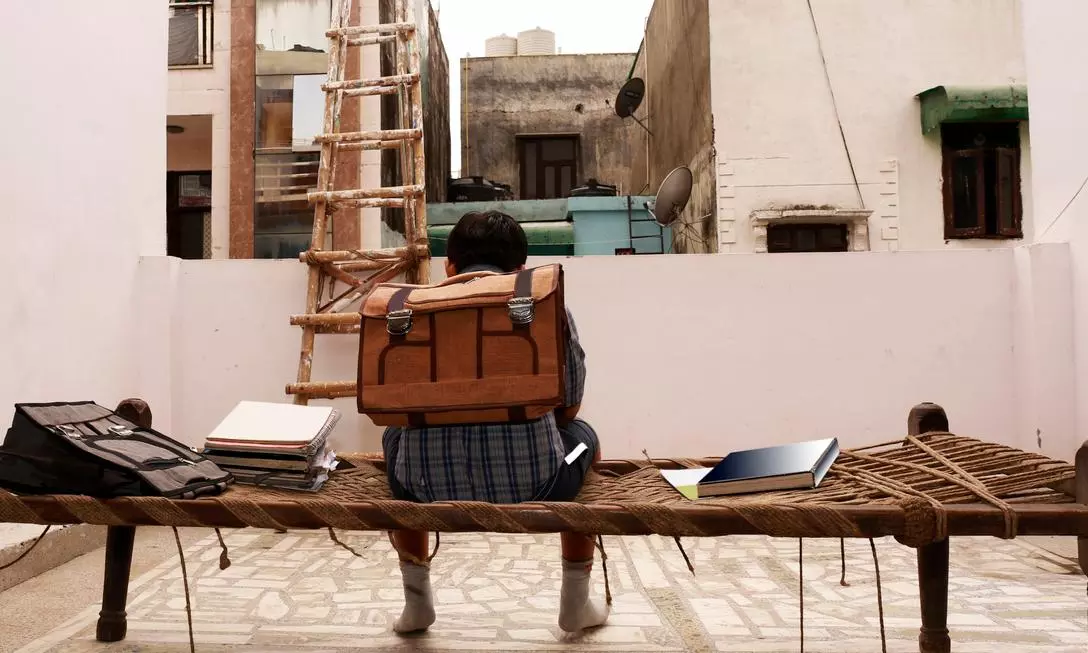
- Home
- India
- World
- Premium
- THE FEDERAL SPECIAL
- Analysis
- States
- Perspective
- Videos
- Sports
- Education
- Entertainment
- Elections
- Features
- Health
- Business
- Series
- In memoriam: Sheikh Mujibur Rahman
- Bishnoi's Men
- NEET TANGLE
- Economy Series
- Earth Day
- Kashmir’s Frozen Turbulence
- India@75
- The legend of Ramjanmabhoomi
- Liberalisation@30
- How to tame a dragon
- Celebrating biodiversity
- Farm Matters
- 50 days of solitude
- Bringing Migrants Home
- Budget 2020
- Jharkhand Votes
- The Federal Investigates
- The Federal Impact
- Vanishing Sand
- Gandhi @ 150
- Andhra Today
- Field report
- Operation Gulmarg
- Pandemic @1 Mn in India
- The Federal Year-End
- The Zero Year
- Science
- Brand studio
- Newsletter
- Elections 2024
- Events
- Home
- IndiaIndia
- World
- Analysis
- StatesStates
- PerspectivePerspective
- VideosVideos
- Sports
- Education
- Entertainment
- ElectionsElections
- Features
- Health
- BusinessBusiness
- Premium
- Loading...
Premium - Events

What nation needs is Mastery Model of Education, where a child goes to next level only after mastering everything at a particular level
Everyone is generally aware that India’s education system is the pits, particularly in rural areas, producing unreasonably ill-informed young people when they emerge from the schooling mill. How ill-informed India’s young are does not yet fail to shock, when the yearly ASER survey results come out.
The voluntary organisation, Pratham, comes out with the Annual Survey of Education Report (ASER), which tries to assess the outcome of attempts at school to educate our young.
Depressing findings
This year’s survey covered 34,745 students in the age group 14-18 from 28 districts spread across 26 states (samples were taken from two districts each in the case of Madhya Pradesh and Uttar Pradesh). The findings are predictably depressing.
A quarter of the children surveyed cannot read a piece of Class 2-level text in their mother tongue. Less than 44 per cent of them could divide a four-digit number by a single digit. Only 43 per cent could read a sentence in English. While 85 per cent of 14-18-year-olds could measure the length of an object using a scale when the starting point was kept at 0 on the scale, the proportion of the linearly challenged rose from 15 per cent to 61 per cent when the starting point was moved away from 0.
Gender disparity
Boys outdid girls in problem-solving. Nearly 43 per cent of boys owned or had access to smartphones while less than half that proportion of girls owned or had access to smartphones. Clearly, the nurturing of gender stereotypes crimps achievement.
About 9 per cent of children had computers at home. However, about 90 per cent of those surveyed had used social media in the reference week. A roughly equal proportion claimed to have used digital access for educational purposes.
When policymakers crow about the high proportion of India’s population that is young, and how that is a great asset for the economy, the implicit assumption is that these young cohorts are productive people, raring to go, to perform wonders in the coming globalised knowledge economy.
Minimum standards
Because India’s numbers are so huge when it comes to any kind of demographic, it is easy to find solace in the rising absolute numbers of startups and startups with spectacular valuations or any other such absolute measure of economic activity and productivity.
Yet, when we look at the proportion of these relative successes to the total population of people seeking a livelihood, we get a whole lot less 'delulu’, to borrow a piece of TikTok slang for ‘delusional’.
When you come out of school, you must be fluent in at least one language, and functional in English and numeracy. When you fall short of that bare minimum, it is unlikely that you will represent two hands to produce rather than just one mouth to feed. Instead of representing a net addition to society’s productive capacity, you would represent a net drain.
Mathematics, a must
How can we, as a nation, emerge from this crisis in education? Getting people to stay on in school is not the solution. If you have not learned to count, you cannot really learn to add. If you do not know to add, you can neither subtract nor multiply. Division is difficult to grasp without understanding multiplication. Arithmetic, more than any other discipline, builds on prior knowledge, and if that is flawed, subsequent knowledge would also be doubly flawed.
It is vital to make comprehension and mastery of basic concepts the goal of primary education. This alone would build the foundation for higher levels of learning, whether at school or college.
The Khan Academy of Sal Khan, the supplementary education champion in the US, has been advocating the Mastery Model of education, in which a child moves on to the next level only after mastering everything he or she is supposed to learn at a particular level.
Mastery Model
The Mastery Model has three advantages. One, students are thorough with the fundamentals of what they are supposed to learn. Two, they learn that they can learn anything, provided they apply themselves diligently to the task at hand long enough.
The intelligent would learn fast, the less intelligent would take longer but still acquire the confidence that they, too, can learn anything, provided they apply themselves to the task long enough. And three, mastery of any subject by a student offers a thorough test of a teacher’s efficacy.
Teachers whose students fail to achieve mastery should be replaced by competent teachers willing to slog along with their students to achieve mastery. Once students find themselves in the mastery mode, further learning would be a breeze. They would be able to find in themselves the resources to learn any difficult subject, tapping any plausible source of assistance to achieve their mission.
Role of technology
This discussion has proceeded as if technology plays no role in educational attainment, and everything depends on pedagogical choices. Technology’s role in educational excellence is, in fact, less vital than most people assume it to be. In the mastery model, technology would be of help, if it could make assessment of individual achievement in a class of many a simple enough task.
It has experimentally been established that educational attainment is higher when a group of students is forced to share one digital device and discuss each student’s findings with the others than when every student is equipped with a digital device, and restricts interaction with others over what each has learned.
Critical thinking
Technology can play a role in bridging the gap between the desirable number of books that a child should read outside the school syllabus and the number of books locally available. Digital libraries should be able to widely distribute e-books, even if on a temporary basis, to give young people access to the wealth of human achievement in different spheres of knowledge and activity that has been accumulated over the ages.
The new National Education Policy (NEP) has the stated aim of promoting critical thinking. That is constrained, of course, by the lived reality of stratified society that abhors any challenge to authority, whether of the teacher in the classroom or of social superiors in life outside the classroom. Even then, it should be possible for committed teachers to instil a spirit of inquiry among their wards, and equip them with the means to pursue their lines of inquiry on their own.
India cannot afford to continue with the failed educational model that produces the abysmal results of the ASER exercise. It betrays our young, the economy and the nation’s potential for greatness.
(The Federal seeks to present views and opinions from all sides of the spectrum. The information, ideas or opinions in the articles are of the author and do not necessarily reflect the views of The Federal.)

